Aeshna cyanea - Southern Hawker
Phylum: Arthropoda - Class: Insecta - Order: Odonata - Family: Aeschnidae
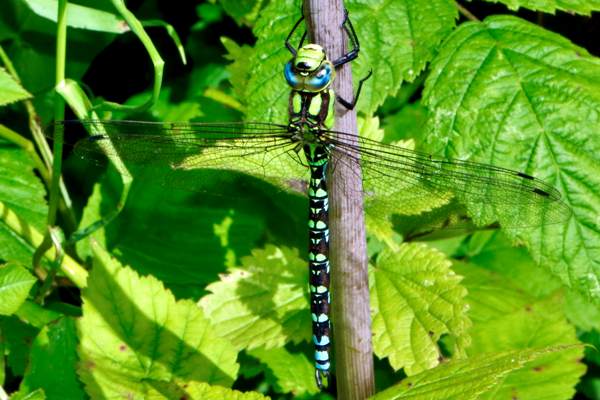
This is a most inquisitive dragonfly and will often fly up close to the face of someone walking along a path in its territory.
Description
The male (see picture above) has mostly greenish spots along its upper abdomen apart from segments 8, which has blue spots, and segments 9 and 10, which have blue partial bands. There are also blue spots on the sides of the abdomen. The abdomen is slim and it is distinctly waisted just below the junction with the thorax.
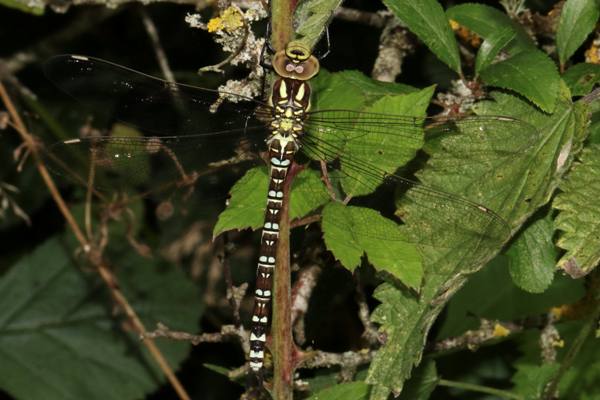
Females (see picture above) have slightly broader abdomens than males but are otherwise quite similar except that they have only green spots and complete bands on segments 9 and 10.
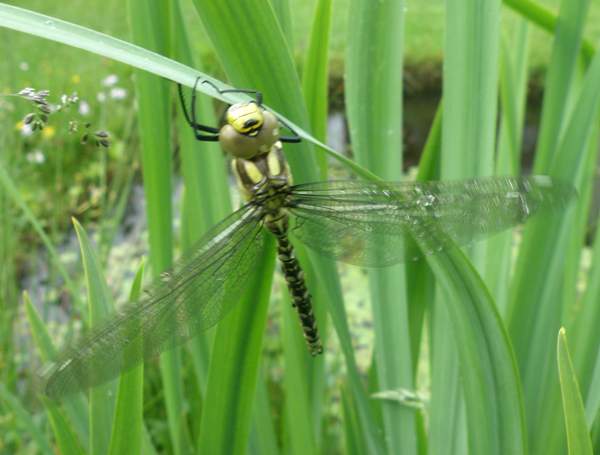
Above: a newly-emerged male Southern Hawker resting on leaves of Yellow Flag Iris.
Distribution
The Southern Hawker is a very common sight in summer throughout England and Wales. This dragonfly is less common in the north and occurs in just a few locations in northern Scotland. There are no colonies of this dragonfly known in Ireland. On mainland Europe the Southern Hawker is most common in the central region, but its longitudinal range extends from southern Scandinavia right down into North Africa and its range eastwards extends into parts of Asia.
Habitat
The Southern Hawker breeds in garden ponds as well as in canals and lakes.
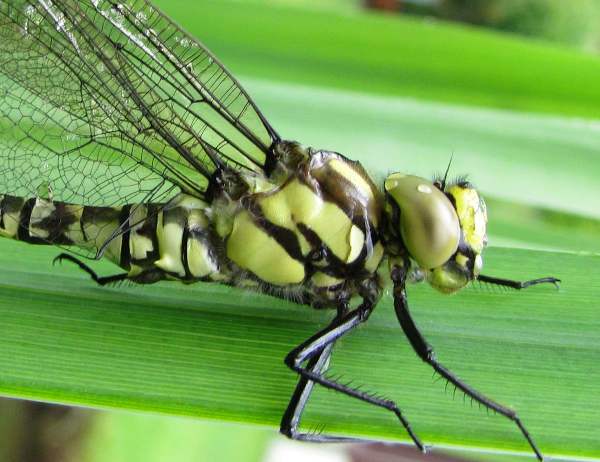
The head and thorax of a newly-emerged Southern Hawker.
Mainly seen flying over ponds, canals or slow-flowing streams or hawking along leafy country lanes, like other members of the Aeshna genus this beautiful insect flies for long periods without resting, which makes it a difficult creature to study and photograph.
Life Cycle
In Britain the Southern Hawker can usually be seen on the wing from mid June to mid October. The female lays her eggs in summer and early autumn by stabbing her ovipositor into rotting decaying marginal vegetation or rotting wood. The eggs lie dormant through the winter and then hatch in the following spring.
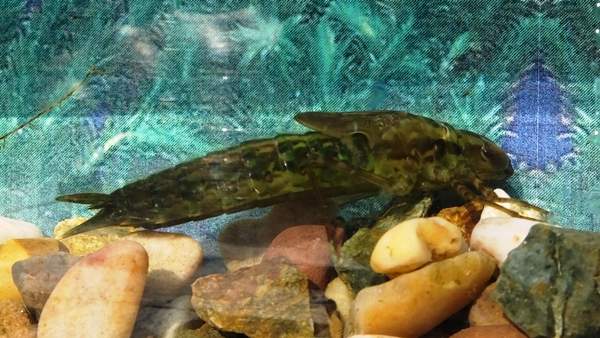
Southern Hawker nymphs take three years to reach maturity, during which time they feed on small invertebrates including the nymphs and larvae of other insects as well as tadpoles and, when they can catch them, newborn newts (known as efts).
Acknowledgements
This page includes pictures kindly contributed by James Wainscoat.
Excited at the prospect of flyfishing? So are we, and we're pretty sure you would find the Winding River Mystery trilogy of action-packed thrillers gripping reading too. Dead Drift, Dead Cert, and Dead End are Pat O'Reilly's latest river-and-flyfishing based novels, and now they are available in ebook format. Full details on our website here...
Buy each book for just £4.96 on Amazon...
Please Help Us: If you have found this information interesting and useful, please consider helping to keep First Nature online by making a small donation towards the web hosting and internet costs.
Any donations over and above the essential running costs will help support the conservation work of Plantlife, the Rivers Trust and charitable botanic gardens - as do author royalties and publisher proceeds from books by Pat and Sue.
